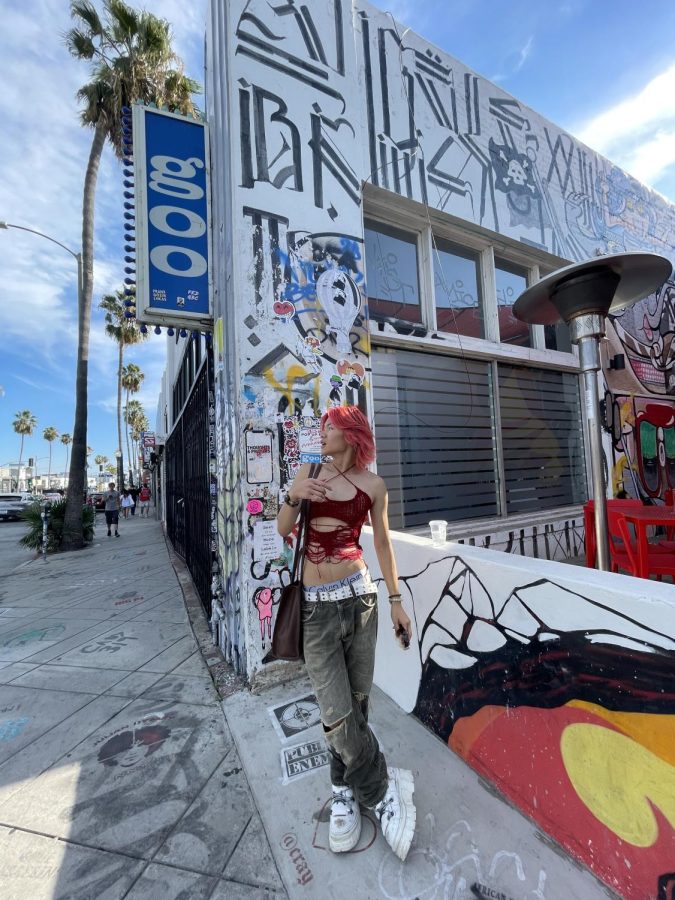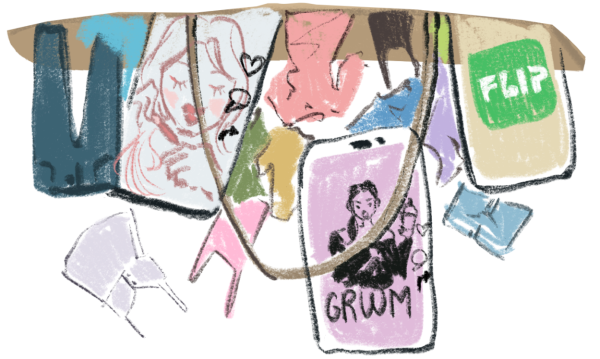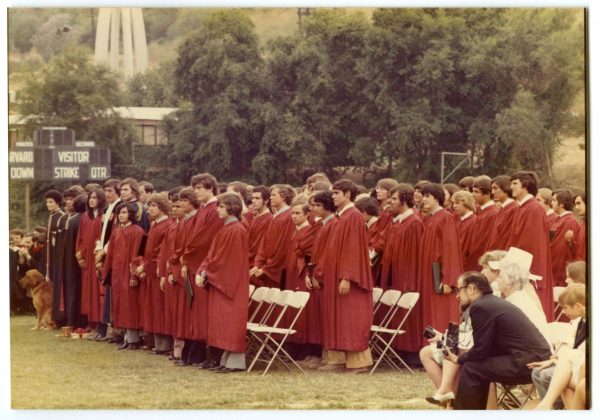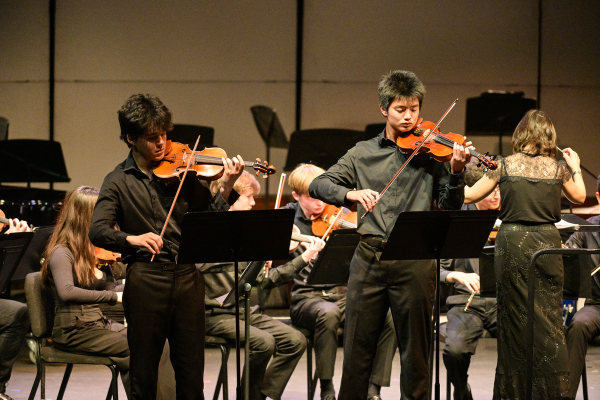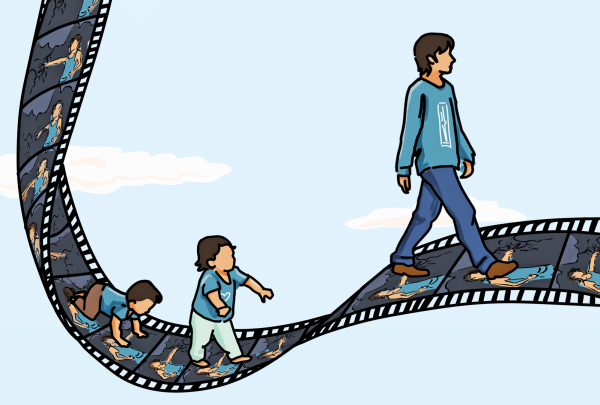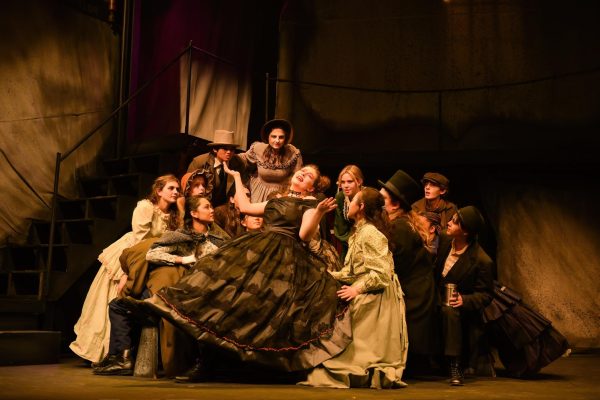Contending with the Trending
Printed with Permission of Jayden Huang
Jayden Huang ’23 stands on a street, posing in an outfit he specifically arranged for the day. Hung said he chooses his outfits based on ideas of characters that he wants to embody.
September 30, 2022
Looking in the mirror as he gets ready each morning, Jayden Huang ’23 said he tries to decide what character he would like to embody with his outfit. Huang said his clothing choices are inspired by who he wants to be on a certain day rather than what is on trend at the moment.
“I base my style more off of characters and less off of outfits themselves,” Huang said. “For today, [my outfit] is giving business, but in my world. Sometimes I want to dress like a grandma, and sometimes I want to dress like a business person, so my outfits are based less on what’s trending and more on my personal preferences.”
Huang said trends help him explore different styles, propelling his personal fashion choices into new realms.
“Many trends affect my style, mostly just because that’s how I get exposed to new types of clothing or new ways to wear certain clothes,” Huang said. “When you’re still trying to figure out your style, it’s nice to be able to look at past blueprints and try to recreate their outfits. I found that many trends helped me expand my closet and go for certain types of clothing that I’d never thought I’d try. Not all styles made me feel the best, and so I stopped wearing them.”
Hyper-specific trends that originate on apps such as TikTok, Pinterest and Depop are often popular for very short periods of time, sometimes just a week, according to Vogue. These short-lived trends, which usually gain popularity on social media platforms such as TikTok or in the collections of fast fashion retailers, are often known as micro-trends, according to The Harvard Crimson. Huang said he does not support the impact of micro-trends on fashion, but there have been times when they opened his eyes to styles he had not experimented with previously.
“While I absolutely hate micro-trends, I will admit that certain micro-trends have helped me find my style, specifically the one with [the brand] Angel Blue,” Huang said. “Angel Blue helped open my eyes towards 2000s [Japanese] fashion. I loved 2000s [Japanese] fashion because, on the one hand, the outfits were so cute, but on the other, it allowed me to view fashion through an Asian lens. The white gaze was no longer that important.”
Fast fashion refers to the quick turnover of trends in the fashion industry and the mass production of low-quality clothing, which also contributes to climate change, according to BBC. Eloise Stoddard ’23 said because micro-trends have a negative impact on the environment due to the use of natural resources and the contribution to excessive fashion waste, she tries to purchase some of her clothing secondhand .
“I definitely make a conscious attempt not to [shop from fast fashion brands], just because I know that it’s really bad for the environment,” Stoddard said. “It’s not ethical. If you look at how fast fashion is produced, it’s really disturbing. I try not to support those brands, but that being said, if there’s a trend that I like, I’ll try to find it secondhand. I’ll go vintage shopping or shop from sustainable brands.”
Stoddard said while she sometimes purchases trending clothing on a whim, she prefers to buy from brands that produce their clothing in smaller quantities.
“I’m by nature very impulsive,” Stoddard said. “[My purchases are] usually from smaller brands, though. I’m not going to go on Shein and buy something that I like. I feel like that’s bad, but if it’s a smaller brand, then I have a little less of a problem buying it because I feel like I’m supporting small businesses.”
As the most downloaded shopping app in the U.S. in 2021, Shein is a prominent fast fashion brand, notorious for the horrible working conditions of its factories, and for stealing designs from smaller businesses, according to The Guardian.
Keira Haley ‘24 said she was inspired by micro-trends from fast fashion brands before the COVID-19 pandemic, but she eventually began to purchase most of her clothes from thrift stores.
“Before COVID, I [liked] fast fashion and cheaper brands like H&M and Urban Outfitters, but coming back, I needed more clothes,” Haley said. “I got a ton of fast fashion stuff, but by the end of freshman year, I got more into thrifting things. I went to Budapest and bought a lot of [secondhand clothing] from there. From then on, I got more into fashion and what I wanted to look like.”
Haley said the low quality and rapid trend cycle of the fast fashion clothing she purchased led her to put more thought into her personal style.
“I started developing my own sense of style because when I bought fast fashion things, they wouldn’t last very long,” Haley said. “I would buy them and really like them when I bought them, and then I’d [start to] hate them a couple of months later. I followed more fashion [influencers] and big designer brands because I like seeing and [thinking] ‘Oh, do I like this look not because it’s on trend, and do I want to emulate that?’ Then, I tried to be more sustainable and get [secondhand] items and things on Poshmark.”
History and Social Studies Teacher Katherine Holmes-Chuba, who teaches the Upper School’s Honors Art History class, said fashion in the 21st century is much more personal than the rigid world of 20th-century fashion houses.
“Fashion, by the early 20th century, was dictated by fashion houses,” Holmes-Chuba said. “Rich women would go to Paris, and they had to keep up with the styles. What’s changed in the 21st century is that fashion is now a means of expression. There are still trends, but there is much more individualism.”
Holmes-Chuba said while she appreciates the accessibility of fashion today, the fast turnover of trends can cause wastefulness.
“Fashion now is something people can use to express their personalities, and it is much more affordable,” Holmes-Chuba said. “The bad thing about fashion now is that there is too much thrown at people. But more and more people are buying used clothing because they don’t want to contribute to the waste of fast fashion. There is a really interesting moment in fashion history right now where people are becoming more ecologically conscious.”
Holmes-Chuba said fashion trends can reveal much about the world at different points in history.
“When you think of fashion history, it’s really social history,” Holmes-Chuba said. “It tells you a lot about the society and perceptions of women and men at the time.”































